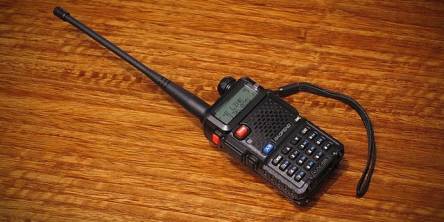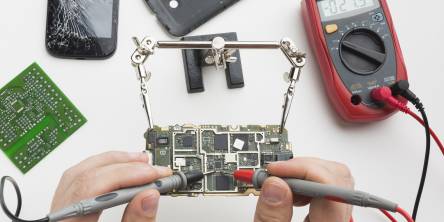Reasons To Use Flutter for IoT App Development

Internet of Things, or IoT, is a fast-growing concept that promises a transformation in how we live and work. It enables us to connect and control smart devices such as wearables, medical devices, sensors & more using mobile apps. IoT has impacted many aspects of our lives, and some of the most notable are home building, logistics, healthcare, and more.
IoT apps or applications use devices and related technologies to perform various tasks and functions. These apps collect, analyze and act on the data received from the IoT devices and provide a user interface that can be used to control and monitor them. IoT apps offer many benefits for users, such as convenience, efficiency, safety & personalization.
Flutter is a cross-platform mobile app development framework that can be used to develop responsive and beautiful apps for Android & iOS platforms using a single codebase. Besides these, Flutter also provides a rich set of widgets, animations, state management & other testing tools that allows the building of high-quality IoT apps in less time.
With this article, I'll explore some prominent reasons for choosing Flutter for IoT app development.
Why use Flutter for IoT app development?
- Flutter & Bluetooth connectivity: Flutter can easily interact with electrical equipment and other devices using Bluetooth connectivity. Plugins like flutter_bluetooth_serial or flutter_nlue can be integrated for Bluetooth functionality in the Flutter app, enabling the apps to communicate with other devices. Arduino and various modules can also monitor and control electrical equipment remotely.
- Prototyping: IoT app prototyping using Flutter allows the creation of a preliminary version of the app that can run on multiple platforms and interact with IoT devices and services using Flutter. The advantage of prototyping IoT apps using Flutter is the easy integration of IoT devices and services. Flutter supports various plugins and packages that enable communication with IoT devices using Bluetooth, Wi-Fi, MQTT, HTTP & other protocols.
- Single codebase: Flutter is a cross-platform framework & programmers need to write code only once that can be used on multiple platforms. This means that a single version can run on IoT, iOS & Android platforms, helping save time, effort, and money in development versus app development using native frameworks.
- Productivity using the hot reload feature: Hot reload feature is unique to Flutter and allows developers to see the changes made to the code instantly. Updates are available to the designers and developers in real time, while the development of other features can continue without interruptions. It helps boost productivity, reduce development time and cost for creating robust IoT apps.
- Fast and performant: Flutter uses the Dart programming language, which can be compiled into native code and runs on a high-performance virtual machine. Its reactive framework helps update UI automatically when the state changes and results in smooth animations, transitions & responsiveness.
- Native-like performance: It uses no intermediate code or interpretation layers. It achieves native performance through a single framework by directly compiling apps into machine code and eliminating performance issues.
- Open source: It is an open-source code software development toolkit that provides easy access to documentation and posting of issues on the open developers' forum. Since its open source allows programmers to learn from the active developer community, which keeps contributing to the platform, it helps increase efficiency and productivity. It reduces the time and cost of the project.
- Cost-effective: It provides a rich set of animations, widgets, testing tools & state management that helps create functional and beautiful apps in less time. It also allows customization of the look and feel of apps using themes, fonts, colors & shapes. This helps reduce the need for external libraries or plugins, which can increase the cost and complexity of app development.
- Widgets: Flutter widgets are UI components and provide a native-like look and feel for the app. These widgets are responsive and adaptive. Widgets like LayoutBuilder, MediaQuery & OrientationBuilder can be used to adjust the layout and size of widgets as per screen dimensions and device orientation. Flutter widgets help create functional and intuitive user interfaces using device functions and features.
Conclusion
Flutter is a powerful and versatile framework for developing single codebase, multi-platform IoT-based apps. It offers many benefits for IoT app development, such as -
- Fast prototyping and time to market
- Native-like UI with high performance
- Rich set of widgets and libraries
- Easy integration with IoT devices and services
- Hot reload-restart features
- Active community with support for testing and debugging tools
Futter makes an excellent choice for IoT app development for companies looking to create and deliver innovative and user-friendly solutions for smart devices. You can work with a specialist Flutter development services provider to leverage the exclusive features of Flutter, like hot reload, to develop high-quality apps for IoT devices. They can help you create high-quality apps that meet user expectations and needs.
Similar Articles
Walkie-talkies with an extensive reception capacity have changed significantly when it comes to portable communication by displaying cutting-edge features with seamless connectivity that covers more than just the state
USB-C technology has revolutionized the way we charge our devices, offering faster charging speeds, higher power delivery, and universal compatibility across multiple devices
Discover expert mobile app development strategies to create a viral app that attracts users and boosts engagement
Optimize app localization for iOS users across the EU with language, cultural, and regulatory adaptations. Engage users and boost retention with these tips!
Discover the top 10 mobile app development trends of 2024! Explore 5G, AI, AR/VR, blockchain, and more to stay ahead in the ever-evolving app development landscape.
With its triple-lens design and fantastic photo and video quality, the iPhone 11 Pro Max is extensively acknowledged for its superior camera system. But problems can occur with also one of the most advanced technologies. If you're having issues with the iPhone 11 pro max camera lens, knowing the typical problems and how to repair them
Protect your app from threats with AppSealing's robust, all-inclusive security solution. Safeguard user data, ensure compliance, and maintain top performance.
Selling products online has become an increasingly popular way to reach potential customers. Online marketplaces are a great platform to showcase your products, but managing multiple listings on various platforms can be quite time-consuming.
Enterprise app development has emerged as a crucial driver for maximizing return on investment (ROI). By streamlining operations, enhancing customer engagement, and enabling data-driven decision-making, custom enterprise applications empower organizations to achieve their strategic goals efficiently.









